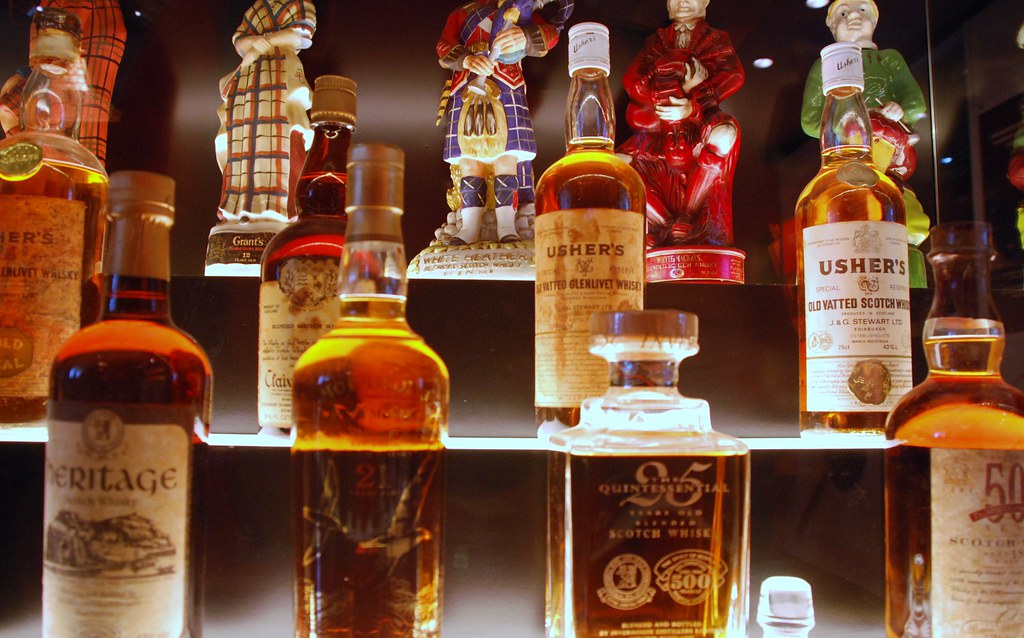
Whiskey is a popular alcoholic beverage that is enjoyed by many. It is made from fermented grains, such as barley or corn, and aged in wooden barrels. While most people are familiar with the taste and aroma of whiskey, not many know about its pH level.
Table of Contents
Understanding pH
pH is a measure of acidity or alkalinity of a substance. It is measured on a scale of 0 to 14, where 0 is the most acidic, 7 is neutral, and 14 is the most alkaline. The pH scale is logarithmic, meaning that a change of one pH unit represents a tenfold change in acidity or alkalinity.
Substances with a pH below 7 are considered acidic, while those with a pH above 7 are considered alkaline. The pH of a substance can affect its taste, texture, and overall quality. For example, acidic substances like lemon juice can give a sour taste, while alkaline substances like baking soda can give a bitter taste.
In the case of whiskey, the pH can range from 3.5 to 4.8, depending on the type and production process. This makes whiskey a moderately acidic substance. The acidity of whiskey comes from the grains used in its production, such as barley or corn. During fermentation, yeast produces carboxylic acids like acetic acid, which also contributes to the acidity of whiskey.
The pH Scale and Whiskey.
According to a study published in 1942, the pH of Scotch ranged from 4-4.78 (4.34 avg), “American style Scotch” ranged from 4-6.22 (4.81 avg), and Irish whiskey ranged from 4.25-5.06 (4.55 avg). The ages of these whiskies weren’t specified; however, they did observe that brandy’s pH decreased from about 5.4 to 4.0 within a few years.
Factors like the type of grain used, the distillation process, and the aging process can all affect the acidity of whiskey. While whiskey does have a distinct flavor profile that includes some acidity, it is generally not considered to be more acidic than wine, which has a pH ranging from 3.5 to 3.7.
It’s important to note that the pH of whiskey can affect its taste and overall drinking experience. Some people prefer a less acidic whiskey, while others enjoy the slightly tart taste. Ultimately, the pH of whiskey is just one of many factors that contribute to its complex flavor profile.
Factors Affecting Whiskey pH
Several factors can affect the pH level of whiskey. Here are some of the most significant factors:
1. Type of Whiskey
Different types of whiskey have different pH levels. For example, bourbon whiskey tends to have a higher pH level than rye whiskey. The pH level of whiskey can also vary depending on the production process and the aging period.
2. Water Source
The pH level of the water used in the production process can affect the pH level of whiskey. Distilleries that use alkaline water tend to produce whiskey with a higher pH level, while those that use acidic water tend to produce whiskey with a lower pH level.
3. Aging Process
The aging process can also affect the pH level of whiskey. Whiskey that is aged in charred oak barrels tends to have a lower pH level than whiskey that is aged in uncharred barrels. This is because the charred oak can absorb some of the acidity from the whiskey.
4. Dilution
The pH level of whiskey can also be affected by dilution. Adding water to whiskey can increase its pH level, while adding acidic mixers can decrease its pH level. It is important to note that the pH level of whiskey can change over time, even after it has been bottled.
Measurement of Whiskey pH
Measuring the pH of whiskey is a straightforward process that requires a pH meter, a small sample of whiskey, and a container to hold the sample. The pH meter is calibrated using buffer solutions of known pH values before taking the measurement. The sample is then placed into the container, and the pH meter is inserted into the sample. The pH meter measures the acidity of the whiskey, and the result is displayed on the screen.
 photo credit: www.flickr.com
photo credit: www.flickr.com
Implications of pH on Whiskey Quality
pH is an important factor that affects the quality of whiskey. Whiskey’s pH value is usually in the range of 3.4 to 4.8. The pH of whiskey is mainly determined by the presence of organic acids, particularly acetic acid. Other organic acids, such as lactic acid and succinic acid, may also contribute to the acidity of whiskey.
The pH of whiskey can affect its taste, aroma, and stability. Whiskey with a higher pH tends to have a smoother taste and a less harsh aroma. Whiskey with a lower pH tends to have a more intense flavor and aroma, but it may also be more unstable and prone to spoilage.
The pH of whiskey is also important for its maturation process. During maturation, whiskey interacts with the oak barrel, which can affect its pH. The oak barrel can release tannins and other compounds that can increase the acidity of whiskey. The pH of whiskey can also affect its color, as more acidic whiskey tends to be lighter in color.
To ensure the quality of whiskey, it is important to monitor its pH throughout the production process. pH adjustments can be made by adding alkaline or acidic substances to the whiskey. However, it is important to note that excessive pH adjustments can negatively affect the flavor and aroma of whiskey.
Frequently Asked Questions
How does the pH level of single malt whisky compare to other spirits?
Whiskey is generally considered to be more acidic than other spirits like brandy, gin, or rum. The pH level of whiskey can range from 3.4 to 5, depending on the type and brand. However, it is important to note that the pH level of a beverage is just one factor that contributes to its overall acidity.
Can consuming whiskey contribute to acid reflux due to its pH level?
There is no clear evidence that consuming whiskey can directly contribute to acid reflux. However, people who are prone to acid reflux may want to avoid drinking whiskey or other alcoholic beverages, as they can irritate the lining of the esophagus and trigger symptoms.
What is the typical pH range for bourbon varieties?
Bourbon is a type of whiskey that is made from at least 51% corn and aged in new, charred oak barrels. The pH level of bourbon can vary depending on the specific brand and aging process, but it typically falls within the range of 3.9 to 4.5.
Are there differences in pH levels between various brands of whiskey, such as Jack Daniels?
Yes, there can be variations in the pH level of different brands of whiskey. For example, a study of various Scotch whiskies found that the pH levels ranged from 3.64 to 4.10, depending on the brand. Similarly, the pH level of Jack Daniel’s whiskey may differ from other brands due to differences in the production process and aging.
In terms of acidity, how does whiskey compare to other alcoholic beverages like brandy, gin, or rum?
As mentioned earlier, whiskey is generally considered to be more acidic than other spirits like brandy, gin, or rum. The pH level of brandy typically ranges from 3.1 to 3.9, while gin and rum have pH levels that are closer to neutral (around 7). However, it is important to note that the pH level of a beverage is just one factor that contributes to its overall acidity, and other factors like sugar content and carbonation can also affect acidity levels.
Conclusion
Whiskey is considered acidic, with a pH ranging from 3.5 to 4.0. The acidity of whiskey comes primarily from the grains used in its production, such as barley or corn.
It is important to note that the pH level of whiskey can affect its taste and overall drinking experience. Whiskey with a higher pH level may taste smoother, while whiskey with a lower pH level may taste harsher or more bitter.
Factors such as the type of barrel used for aging, the water source, and the distillation process can also affect the pH level of whiskey.
Understanding the pH level of whiskey can help individuals make informed decisions about their drinking preferences and pairings.
Related Posts
If you’re interested in learning more about whiskey, here are some related posts that you might find interesting:
- A chat with Drew Mayville, Buffalo Trace’s Master Blender: This interview with Drew Mayville, the Master Blender at Buffalo Trace, provides insight into the process of blending whiskey and the challenges that come with it.
- Whisky Auctions: 7 Questions For Daniel Milne, Whisky Hammer co-founder: This interview with Daniel Milne, the co-founder of Whisky Hammer, discusses the business of whisky auctions and how they work.
- Japanese Whisky Facts: Why is Karuizawa so hot?: This article explores the popularity of Karuizawa, a Japanese whisky that has become highly sought after by collectors.
- #askTWL – A Dramtastic Q&A Session with The Whisky Lady: This Q&A session with The Whisky Lady covers a wide range of topics related to whisky, including tasting notes, distillery tours, and more.
- 7 Questions for Adam Spiegel from Sonoma County Distilling: This interview with Adam Spiegel, the founder of Sonoma County Distilling, provides insight into the process of making craft whiskey in California.



